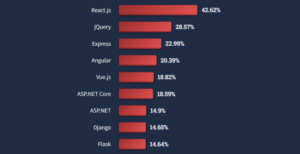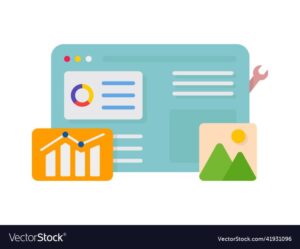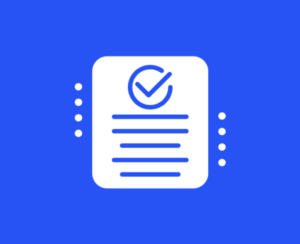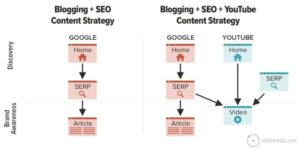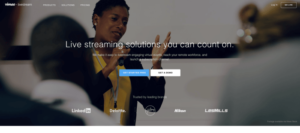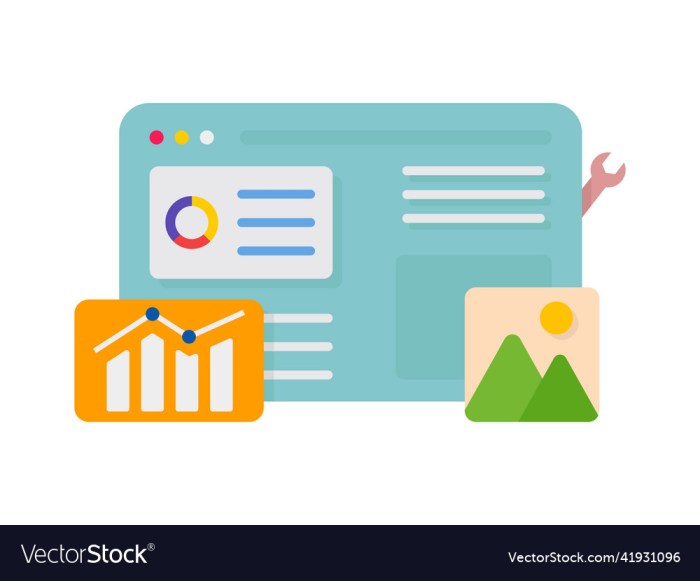
Web design for optimization is a crucial aspect of creating a successful online presence. It involves implementing design principles that not only elevate your website’s aesthetic appeal but also enhance its visibility on search engines. By understanding the interplay between design elements and strategies, web designers can create user-friendly and search-engine-friendly sites that drive organic traffic and improve user engagement.
From responsive design that caters to all devices to the strategic use of headings and meta tags, every element plays a vital role in engaging visitors and ensuring they have a seamless experience. As we explore this topic, we’ll uncover essential techniques that bridge the gap between effective web design and optimized search engine performance.
Web Design Principles for Optimization
Effective web design goes beyond aesthetics; it plays a crucial role in optimizing a website for search engines. Understanding and implementing essential design principles can significantly enhance a site’s visibility on search platforms. This optimization not only drives traffic but also ensures a better user experience, leading to higher engagement and conversion rates.
Essential Design Principles for
The core principles of web design that contribute to optimization involve several key factors. These include site speed, clean coding, and intuitive navigation. A website that loads quickly is favored by search engines, reducing bounce rates and increasing user engagement. Clean code aids in faster indexing by crawlers, while intuitive navigation helps users find information seamlessly, keeping them on the site longer.
Responsive Design and User Experience
Responsive design is critical in today’s digital landscape, particularly with the increasing use of mobile devices. A responsive website adjusts its layout and content based on the screen size and orientation, providing an optimal viewing experience across various devices. This adaptability not only boosts user satisfaction but also positively influences rankings. Google’s mobile-first indexing emphasizes the importance of mobile usability, making responsive design a pivotal aspect of web development.
Effective Use of Headings and Meta Tags
Headings and meta tags play a vital role in conveying the structure of your content to both users and search engines. Properly utilizing headings (H1, H2, H3) helps guide visitors through the content while indicating the hierarchy of information. For instance, the H1 tag should contain the primary of the page, effectively summarizing the content. Meta tags, including title tags and meta descriptions, provide concise summaries of web pages, influencing click-through rates from search engine results pages (SERPs).
To optimize these elements, consider the following:
- Headings: Use relevant s in headings without stuffing. This not only aids but also improves user readability.
- Title Tags: Keep title tags under 60 characters to ensure they display correctly in search results, incorporating primary s.
- Meta Descriptions: Craft engaging meta descriptions that accurately reflect the content and include relevant s to entice users to click.
“Well-structured headings and optimized meta tags are essential for both user experience and search engine optimization.”
Integrating Search Engine Marketing with Web Design
Web design plays a crucial role in enhancing the effectiveness of search engine marketing (SEM) strategies. When designed thoughtfully, a website can significantly impact user experience and conversion rates, leading to better performance in SEM campaigns. An aesthetically pleasing, user-friendly, and -optimized website helps attract and retain visitors, making it a vital component of any marketing strategy.The integration of web design with SEM is all about creating an environment where potential customers can easily navigate, find information, and ultimately convert.
A well-structured website that aligns with specific marketing goals can enhance visibility, engagement, and conversion rates. By considering various elements of design, marketers can optimize their web presence to achieve higher returns on their SEM investments.
Design Elements Influencing SEM Effectiveness
Several key design elements can directly influence the effectiveness of SEM campaigns. These elements, when optimized, can enhance user engagement and drive conversion rates. Consider the following aspects:
- Loading Speed: A fast-loading website is essential for minimizing bounce rates. Studies show that a delay of just a few seconds can lead to significant drops in conversion rates.
- Responsive Design: With increasing mobile device usage, ensuring that a website is mobile-friendly is crucial. A responsive design adapts to different screen sizes and improves user experience across all devices.
- Clear Call-to-Action (CTA): Strategically placed and visually appealing CTAs guide users towards desired actions, such as signing up or making a purchase. Effective CTAs can significantly increase conversion rates.
- Visual Hierarchy: A well-structured layout that emphasizes important information helps users navigate easily. Using contrasting colors, font sizes, and spacing can draw attention to critical areas of the page.
- Content Quality: High-quality, relevant content enhances user engagement and increases the likelihood of conversions. Content should be tailored to meet the needs of the target audience.
Aligning landing page design with specific marketing campaigns is essential for maximizing the effectiveness of SEM efforts. Each landing page should reflect the goals and messaging of its associated campaign. Here are some factors to consider when designing landing pages:
- Consistency in Branding: Ensuring that the landing page design matches the overall branding and aesthetics of the campaign helps build trust and recognition with users.
- Targeted Messaging: The content on the landing page should be aligned with the ad copy that led users there. Consistency in messaging reinforces the user’s decision to click through.
- Minimized Distractions: A focused design that limits unnecessary elements helps direct users towards the intended action, such as filling out a form or making a purchase.
- Optimized Forms: Simplifying form fields and reducing steps to complete an action can significantly improve conversion rates. The easier it is for users to provide their information, the more likely they are to do so.
Incorporating these design principles into SEM strategies can enhance user experience and effectiveness. A well-designed website that prioritizes these elements not only attracts traffic but also fosters higher conversion rates, ultimately leading to the success of search engine marketing initiatives.
The Role of Social Media and Networking in Web Design
Integrating social media into web design is crucial in today’s digital landscape. Social platforms not only enhance a website’s visibility but also contribute significantly to its potential. This synergy between web design and social media fosters improved user engagement, drives traffic, and encourages interactions that can lead to higher search engine rankings.Social media integration can enhance a website’s reach and potential by facilitating content sharing and increasing user engagement.
When social media buttons are prominently featured on a website, they enable visitors to easily share content across their networks, thereby increasing organic reach. Additionally, social signals—such as likes, shares, and comments—are considered by search engines as indicators of content quality and relevance. This can lead to improved rankings in search results as search algorithms increasingly factor in social engagement metrics.
Embedding Social Bookmarking Features in Web Layouts
Embedding social bookmarking features into web layouts is essential for maximizing the sharing potential of content. A well-thought-out approach to social bookmarking can improve user interaction and contribute to better results. Here are strategies to incorporate these features effectively:
- Prominent Placement: Position social media buttons at the top or bottom of content, ensuring they are easily accessible without detracting from the primary content focus.
- Customization: Customize buttons to match the website’s design, ensuring they feel like a natural part of the overall layout rather than an afterthought.
- Encouragement of Engagement: Use calls to action (CTAs) near social sharing buttons, prompting users to share if they found the content valuable.
- Responsive Design: Ensure that social media buttons are mobile-friendly, allowing users on smartphones and tablets to share content seamlessly.
- Analytics Integration: Utilize tools like Google Analytics to track the effectiveness of social sharing buttons, allowing for future enhancements based on user behavior.
Impact of Different Social Networking Platforms on Web Design Considerations
When designing a website, it is important to consider how different social networking platforms influence design choices. Each platform has unique characteristics that can affect layout and integration strategies. Here are key considerations based on popular platforms:
- Facebook: With a vast user base, incorporating Facebook sharing features can enhance visibility. It is crucial to design share prompts that display appealing images and descriptions to capture attention in users’ feeds.
- Twitter: Given its character limit, crafting concise messages for Twitter sharing is essential. The design should include a prominent tweet button that generates a pre-filled message when clicked, facilitating quick sharing.
- Instagram: As a visual platform, incorporating Instagram’s image features can attract users. Consider including a gallery or feed of Instagram content to enhance visual appeal and encourage sharing.
- LinkedIn: This professional network focuses on B2B interactions. Web design should include sharable content that highlights industry insights, making it easy for users to share informative articles directly to LinkedIn.
- Pinterest: For image-heavy content, Pinterest integration is vital. Ensure images are optimized for sharing with easy-to-use “Pin It” buttons that enhance the likelihood of content being saved and shared.
Video Marketing and Its Influence on Web Design
Incorporating video content into web designs is becoming increasingly essential for enhancing user engagement and improving performance. As users’ preferences shift towards interactive and visual content, video marketing has proven to be a powerful tool that not only captivates audiences but also drives conversion rates. This section will explore effective guidelines for embedding video content, best practices for video streaming aligned with objectives, and highlight successful campaigns that showcase the pivotal role of video in web design.
Guidelines for Incorporating Video Content into Website Designs
Integrating video content into website designs can significantly boost user engagement. To achieve this, consider the following guidelines:
- Placement: Position videos above the fold for immediate visibility. This encourages viewers to engage without excessive scrolling.
- Load Speed: Optimize video file sizes to ensure quick loading times, preventing users from abandoning the site due to slow performance.
- Responsive Design: Ensure videos are responsive, adjusting seamlessly to different screen sizes and devices to maintain a consistent user experience.
- Clear Calls-to-Action: Incorporate clear CTAs within or just after the video to guide users toward the next steps, whether it’s signing up, purchasing, or learning more.
- Accessibility: Include captions and transcripts to make videos accessible to a wider audience, including those with hearing impairments.
Best Practices for Video Streaming Aligned with Objectives
Efficient video streaming not only enhances user experience but also aligns with goals. Implement these best practices to maximize your video content’s impact:
- Video Hosting: Use platforms like YouTube or Vimeo that offer robust hosting and features to improve discoverability.
- Descriptive Titles and Tags: Use relevant s in video titles, descriptions, and tags to enhance searchability and align with user intent.
- Schema Markup: Utilize schema markup to help search engines understand video content better, improving visibility in search results.
- Engagement Metrics: Monitor metrics such as watch time and viewer retention rates to assess video performance and make data-driven adjustments.
- Embed Videos: Embed videos directly on your site rather than linking to an external site to keep users engaged longer on your page.
Examples of Successful Video Marketing Campaigns
Numerous brands have successfully harnessed the power of video marketing through effective web designs. Here are a few noteworthy examples:
- Dollar Shave Club: Their launch video went viral, featuring clever storytelling and humor which resonated with their target audience, increasing subscriptions significantly.
- GoPro: By showcasing user-generated content in video format, GoPro highlights real-life experiences, effectively engaging their community and driving product sales.
- Airbnb: Their video campaigns focus on storytelling that emphasizes unique travel experiences, capturing viewer interest and promoting brand loyalty.
Internet Security for -Friendly Web Design

In the digital age, ensuring a secure website is paramount not only for protecting sensitive user data but also for enhancing your site’s trustworthiness. Security features integrated into web design can significantly impact search engine optimization () by improving site rankings and user experience. Implementing robust security measures helps establish a secure environment, ultimately fostering user confidence that can lead to better conversion rates.Security is not merely a technical requirement but an essential aspect of web design that can influence performance.
Search engines prioritize websites that provide a safe browsing experience, which is why understanding essential security features and avoiding common pitfalls can enhance your online presence. Incorporating these elements can mitigate risks and align your web design with current best practices.
Essential Security Features for
Implementing key security features is crucial for protecting your website and its visitors. Here are several essential components that should be integrated into your web design:
- SSL Certificate: An SSL certificate encrypts data exchanged between users and your website, which is vital for protecting sensitive information. Websites with HTTPS are favored by search engines, making this a foundational aspect of -friendly design.
- Regular Software Updates: Keeping your content management system, plugins, and themes updated ensures that any known vulnerabilities are patched, reducing the risk of attacks.
- Firewall Protection: A web application firewall can help block malicious traffic before it reaches your website, adding an essential layer of security against common threats.
- Data Backup Solutions: Regular backups are critical for recovering data in case of a breach or data loss. This ensures continuity of service and maintains user trust.
- Content Delivery Network (CDN): Utilizing a CDN can enhance security by distributing your website’s content across various locations, which can mitigate DDoS attacks and improve load times.
Common Security Pitfalls in Web Development
While designing a website, it’s easy to overlook certain security measures, which can have dire consequences for both user safety and performance. Understanding these pitfalls is essential for creating a secure online presence.
“Overlooking basic security practices can lead to vulnerabilities that not only endanger data but can also result in search engine penalties.”
Some common security pitfalls include:
- Weak Passwords: Using simple passwords for administrative access increases the risk of unauthorized access. Strong, unique passwords should always be implemented.
- Lack of Input Validation: Failing to validate user inputs can lead to injection attacks, with serious implications for data integrity and site security.
- Neglecting Security Headers: Not using security HTTP headers can make your site vulnerable to attacks. These headers help mitigate risks like XSS and clickjacking.
- Ignoring User Permissions: Improperly set user roles and permissions can lead to unauthorized access to sensitive information. Always restrict access based on user roles.
- Inadequate Security Testing: Skipping regular security audits and tests can leave vulnerabilities unnoticed, exposing your site to potential attacks.
Checklist for Ensuring a Secure Website
To ensure that your website adheres to security and best practices, consider the following checklist. This will help you create a secure environment that promotes trust and enhances user experience.
- Implement an SSL certificate and ensure your site uses HTTPS.
- Keep all software, including plugins and themes, updated.
- Regularly back up your website data.
- Utilize a reputable web application firewall.
- Conduct regular security audits and vulnerability assessments.
- Enforce strong password policies and multi-factor authentication.
- Validate and sanitize user inputs consistently.
- Correctly configure security headers.
- Limit user permissions to the necessary minimum.
- Educate team members on security best practices.
Conclusion

In conclusion, mastering web design for optimization is not just about making a site look good; it’s about creating a holistic experience that meets both user expectations and search engine requirements. By integrating essential design principles, harnessing the power of social media, and ensuring security, web designers can craft sites that perform well in search rankings while providing value to visitors.
Applying these strategies will not only elevate your brand’s online presence but also foster greater engagement and trust.
FAQs
Why is responsive design important for ?
Responsive design ensures that your website is accessible and functional across all devices, which enhances user experience and is favored by search engines.
How can meta tags influence ?
Meta tags provide essential information to search engines about the content of your pages, helping to improve visibility and click-through rates.
What role does site speed play in ?
Site speed affects user experience and search ranking; faster websites tend to retain visitors better and are favored in search results.
Are there specific design elements that boost conversion rates?
Yes, elements like clear call-to-action buttons, intuitive navigation, and engaging visuals can significantly enhance conversion rates.
How can I ensure my website is secure for ?
Implementing HTTPS, regular updates, and security plugins can help protect user data and enhance trust, positively impacting .

